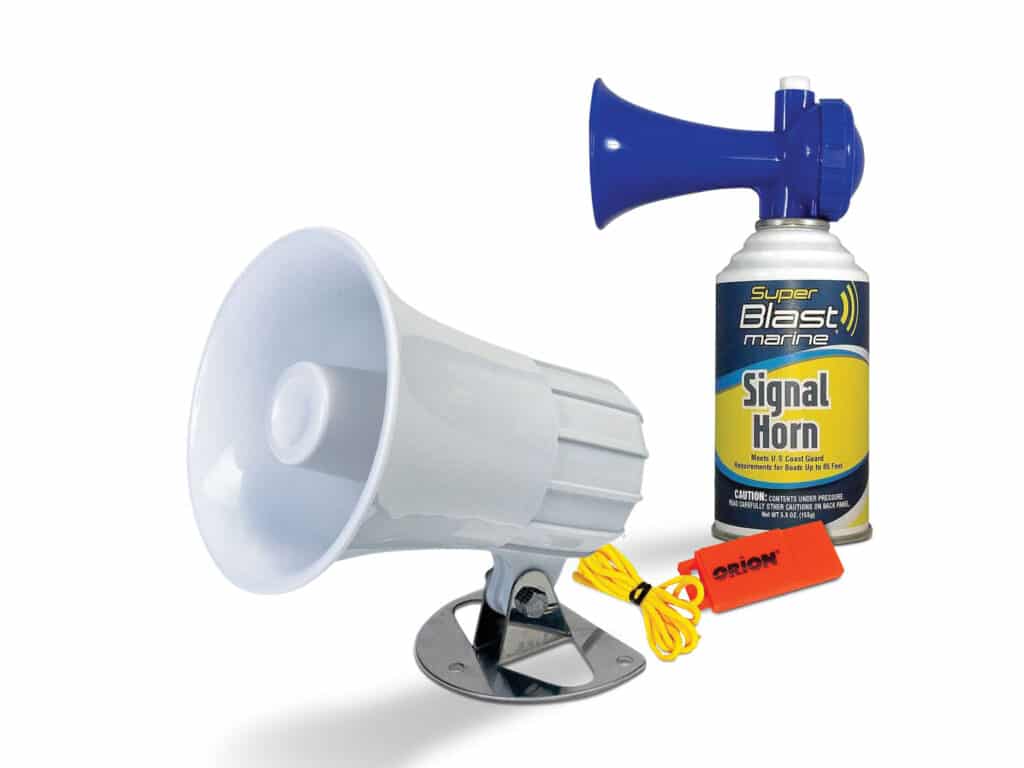SB Television
Three Types of Sound-Producing Devices
 Sound-producing devices come in a variety of forms.
Courtesy West Marine
Sound-producing devices come in a variety of forms.
Courtesy West Marine
When it comes to signaling for help from the water, probably the first things that come to mind are flares, a VHF radio, or an EPIRB, but there’s a reason that the Coast Guard requires carrying a sound-producing device on boats of all sizes. Sound signals let others know where you are and what your intentions are, especially in low visibility. Here are three types you’ll see on board.
Electric Hailer: Standard Horizon 5-Inch Round Hailer/FogHornThe Blast: Though not required, an electric hailer or foghorn can be easily mounted on the bow or hardtop and wired into your system, and it’s an excellent way to notify other boaters of your whereabouts in low-visibility conditions. You can use it through your VHF to broadcast preset horn patterns or to serve as a foghorn.
The Muffle: Requires a fixed mount on your boat and is dependent on a working electrical system. If you have to abandon ship, it stays on the boat.
Price: $39.99; westmarine.com
Air Horn: Maxpro Super Blast Marine Signal HornThe Blast: Everyone recognizes the unmistakable sound of an air horn; press the button, and this one produces a shrill blast that can reach up to 119 dB(A). It’s a noise that’s guaranteed to attract attention, provided someone is around to hear it. In the right conditions, the blast can be heard up to a mile away.
The Muffle: The compressed ingredients last for only a limited number of blasts before the can empties out and is rendered useless. Hopefully, passing vessels will recognize it as a distress call.
Price: $15.49 for a 3.5-ounce can; westmarine.com
Read Next: Three Types of Signal Flares for Boaters
Whistle: Orion Hear-Me Safety WhistleThe Blast: Wear this waterproof whistle on a lanyard or clip it to your belt, and take it out to blow a distress signal when needed. It can project a tweet up to 116 dB(A) (measured at a 1-meter distance) and stops working only when you run out of breath. Depending on weather conditions, whistles can be heard up to a mile away.
The Muffle: It might be hard to hear over wind and wave noise in adverse conditions, and might be hard to use if you’re struggling in the water.
Price: $7.29 for a two-pack; westmarine.com
The post Three Types of Sound-Producing Devices appeared first on Boating Mag.
- Home
- About Us
- Write For Us / Submit Content
- Advertising And Affiliates
- Feeds And Syndication
- Contact Us
- Login
- Privacy
All Rights Reserved. Copyright , Central Coast Communications, Inc.